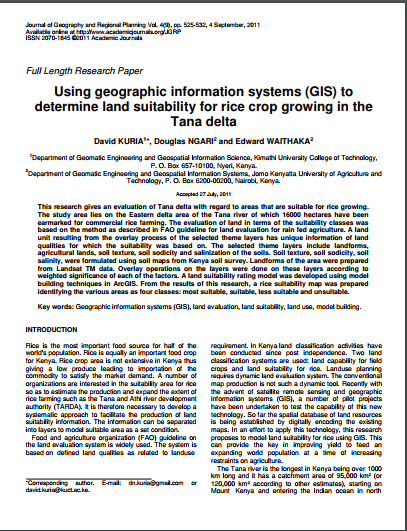Resource information
This research gives an evaluation of Tana delta with regard to areas that are suitable for rice growing. The study area lies on the Eastern delta area of the Tana river of which 16000 hectares have been earmarked for commercial rice farming. The evaluation of land in terms of the suitability classes was based on the method as described in FAO guideline for land evaluation for rain fed agriculture. A land unit resulting from the overlay process of the selected theme layers has unique information of land qualities for which the suitability was based on. The selected theme layers include landforms, agricultural lands, soil texture, soil sodicity and salinization of the soils. Soil texture, soil sodicity, soil salinity, were formulated using soil maps from Kenya soil survey. Landforms of the area were prepared from Landsat TM data. Overlay operations on the layers were done on these layers according to weighted significance of each of the factors. A land suitability rating model was developed using model building techniques in ArcGIS. From the results of this research, a rice suitability map was prepared identifying the various areas as four classes: most suitable, suitable, less suitable and unsuitable.


